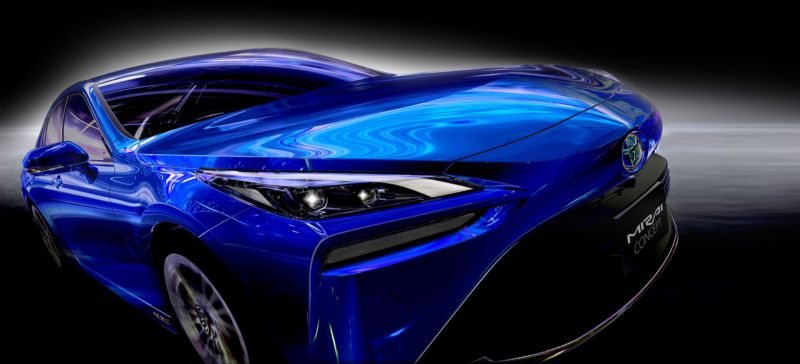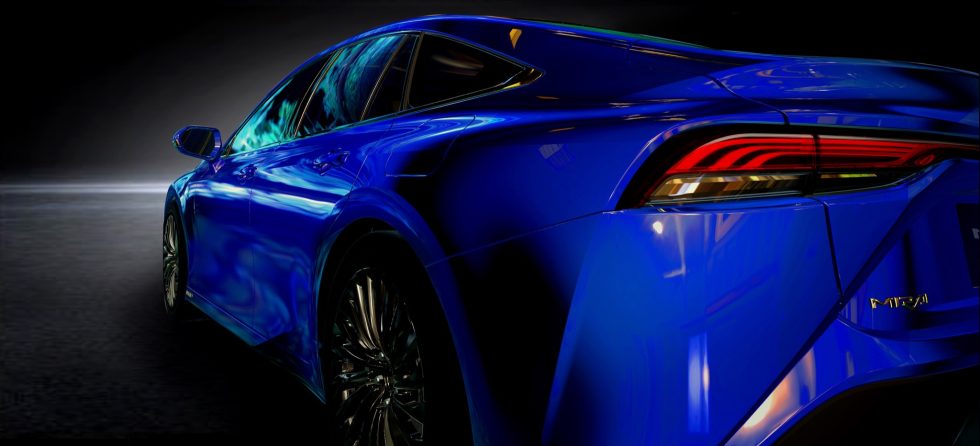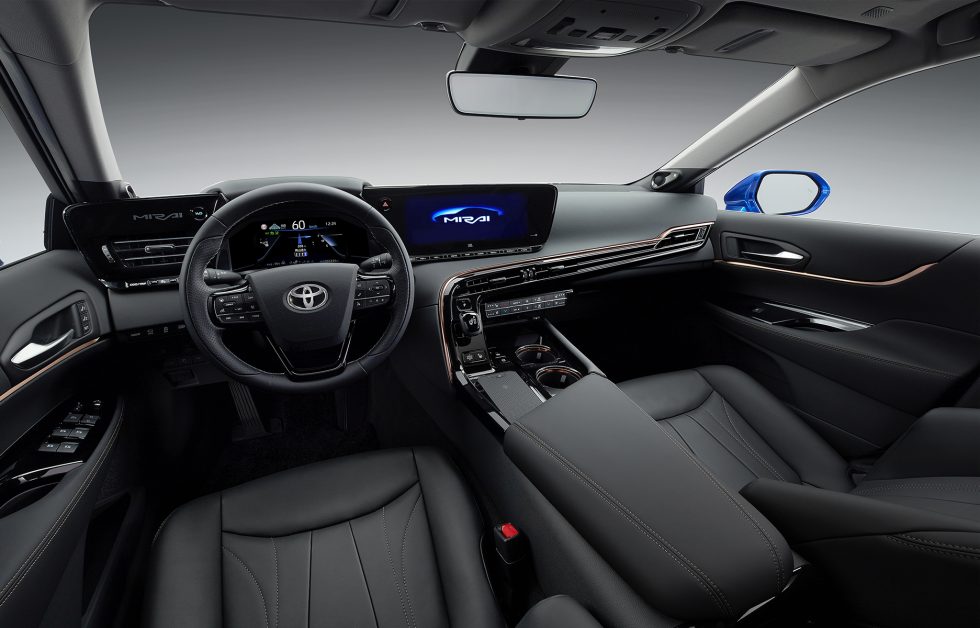
The whole EV image
However first, some background. Prius shortly turned synonymous with hybrid electrics at a time when gasoline per gallon in the USA (as a nationwide common) went from a low of $1 in 1998 to $2 in late 2004 earlier than hitting about $3.25 in mid-2008 and peaking at about $3.60 in 2012. And gross sales of the Prius actually weren't harm when Hollywood totally embraced it. By 2018, 40% of all Toyotas bought within the US have been hybrids. Nonetheless, as of September 2019, solely 2.4% of the entire US market throughout manufacturers are hybrids.
In the meantime, lower than 1% of the US market consists of battery EVs. Although there's development and visibility largely because of Tesla, BEVs face an uphill climb for a number of causes.
First, the typical transaction worth for BEVs is $70,000, which is dear in anybody's guide. About 40% of these responding to a latest ballot on the topic cite excessive price as a problem on the trail to BEV possession. Different impediments are vary nervousness, the inconvenience and time required, plus the USA' sporadic recharging infrastructure. But, even with all the eye, there are nonetheless misunderstandings about hybrids. Analysis reveals {that a} very excessive share of individuals suppose they are often stranded by a hybrid when it runs out {of electrical} cost. (Which is fake, if you happen to had any doubt.)
The quickest transfer in the direction of BEVs appears to be occurring in China. State-run firms and others have a larger incentive to put money into that infrastructure, although even the essential first wave of roads, bridges, and public transportation infrastructure continues to be underway. Assist for BEVs is being baked into the transportation image at the moment below building; EV assist shouldn't be an extra layer as it's in the USA.
Additionally, the auto market itself continues to be in an infancy of kinds in China. In order the market approaches its adolescence, eyes and minds are open to various powertrains.

Toyota
Gas cell improvement
In the meantime, a number of automakers (together with Toyota) have been researching and growing gas cell electrical autos (FCVs) for over 20 years. Actually, Toyota began on FCVs on the identical time it began on hybrids, but the automotive maker's first FCV (the Mirai) solely got here to market in 2015. In the meantime, the corporate's first hybrid hit the highway means again in 1997. Enjoyable gas cell truth #1: gas cells have been round because the 1930s as stationary energy items. Enjoyable common truth #2: Toyota spends a staggering $1 million per hour on all of its R&D. [Enjoyable gas cell truth #3: GM built a FCV "Electrovan" in 1966, however it weighed greater than 10,000lbs/4,535kg—Ed.]
And there are a number of upsides to hydrogen gas cell autos over BEVs. They require a lot much less time to refuel (about 5 minutes, or not for much longer than a petroleum car). They use an considerable supply of vitality (the US produces 10 million tons of hydrogen per yr). Gas cell stacks are supremely scalable—that scalability has been proven since 2016 by Toyota on the transport ports of Los Angeles and Lengthy Seashore. For brief-haul obligation, these ports have been utilizing a fleet of full tractor trailers powered by twin-connected gas cells lifted out of a Toyota FCV software. The trailers emit no pollution and make basically no noise in comparison with a diesel, and their drivers needn't flip off their engines when the autos are idling (as they need to with diesels). This additionally permits the usage of air con for the cabs even when the autos sit stationary.
All of which provides as much as a compelling argument for FCVs, discounting some exterior forces just like the precise price of the gas and the very shy infrastructure for refueling, which features a little bit of a legislative headache, notably within the Jap states. So that you may think about the tangible way forward for FCVs a little bit of a pipe dream, but when just some items of the puzzle pan out, a larger unfold of FCVs throughout our panorama might be solely a pair years' away.
The prevailing Mirai
Beneath the controversial bodywork, the present Mirai makes use of two fuel-cell stacks with 370 cells in every at 12lbs (56 kg) every, together with two hydrogen tanks; one tank below the rear seat and one tank below the trunk. One Camry hybrid battery offers 249 volts. It additionally makes use of a Prius energy management unit, all of which is well worth the equal of 151hp (113kW) and 247lb-ft (335Nm) of torque. The tanks themselves are pressurized to 10,153 psi (700bar, or 70Mpa) and are multi-layered utilizing 5 layers of carbon-fiber plus an outer layer that absorbs sharp impacts.
Since 2015, Toyota has bought about 6,000 Mirai FCVs in California solely, because of many different states' rules on refueling hydrogen. These rules stem from outdated, quite unsafe experiences within the distant previous, although these legal guidelines might be revised as quickly as subsequent yr.
The overwhelming majority of these gross sales are leases, although. The present automotive prices $59,500, not together with the $930 vacation spot cost and the California rebate of $5,000. For the reason that lease phrases of $389/month with a $1,500 money down cost embody the price of gas for 3 years—itself a serious consideration because the vitality equivalency to gasoline is about $7/gallon, and about $14/gallon by quantity—leasing has a really clear benefit.
The upcoming 2021 Mirai
Whereas Toyota has given us a sneak peek on the new Mirai, the automaker is shy on some significant engineering factors on the automotive. Nonetheless, we do know just a few issues.
Toyota has confirmed that the brand new Mirai will likely be rear-drive solely regardless that the present Mirai is front-drive. This implies the brand new mannequin might be primarily based on both the TNGA-N or TNGA-L platform. (Toyota wouldn't reveal any platform data other than its rear-drive orientation; that is our deduction). The brand new automotive can even be longer, decrease, and wider.
The Mirai is far much less ugly the second time round.
We do marvel why Toyota is not promoting this below the Lexus model...
Toyota
Toyota has additionally acknowledged the working vary of the '21 Mirai will enhance by 30%, which means up from the present 312 miles to round 405 miles. That is actual vary, even for a traditional inner combustion automotive with a beneficiant tank. In the top of the latest BEV space, 300 miles of vary has turn out to be regular. So with the tempo of common vary improvement, 400 might be on par with BEVs of the '21 mannequin yr.
Utilizing the present Mirai as a barometer, acceleration and efficiency of the brand new mannequin won't be able to match ICE vehicles. That is the place, nonetheless, we predict there's a hole between some perceptions and expectations within the electrical automotive race, because it have been. A lot is made from BEV's acceleration and particularly Tesla's "Ludicrous" mode—however the precise information reveals that folks do not buy electrical vehicles for his or her surprising acceleration.
"The efficiency piece of the pie is generally emotional, and most shoppers will not [try] that," says Toyota's Nathan Kokes, the automaker's Mobility & Superior Expertise Communications Supervisor. "For them, top-level specification is vary, vary, and vary."
The '21 Mirai can even obtain Toyota's just lately introduced guarantee on EV batteries for all 2020 model-year and later autos, which covers them for 10 years and 150,000 miles. This guarantee can be transferrable; it cascades to subsequent second, third, fourth, and even fifth house owners. We're additionally assured that any early FCV cold-weather susceptibility is completely labored out as properly.
Toyota expects gross sales of 30,000 items globally for the 2021 Mirai within the first yr. Enabling that international determine are Japan's 100 hydrogen refueling stations, Germany's 70 stations, Norway's 50, and the a lot larger common availability of hydrogen stations in Europe than in America. The US has however a handful of stations in California (39 in main metro facilities), 1 in Hawaii, and several other constructed however not open for enterprise pending laws modifications within the Northeast.

Toyota
Inside, the '21 Mirai will obtain a 12.3-inch infotainment multifunction contact display and is unlikely to obtain the much-criticized Contact Management pad that afflicts new Lexus fashions. It is going to additionally get 5 seats the place the present Mirai has simply 4, plus a 15-speaker JBL sound system. The brand new Mirai paint can even observe the Lexus technique of six colour coats and a transparent prime coat with durations of baking between every coat's software.
The one particular servicing of the brand new Mirai will likely be coated below guarantee and pertains largely to the brand new Mirai's air filter substitute (like the present automotive) at 5,000-mile (8,000-km) increments and lubrication of the stack's cooling system pump.
The brand new manufacturing Mirai automotive will likely be first proven publicly on the upcoming Tokyo Motor Present. However given the brand new Mirai's design—which is as good-looking because the outdated automotive's design is ugly—we won't assist marvel why it won't be marketed as a Lexus. Or why Toyota didn't gravitate to an SUV or crossover kind issue, since that is the clear winner within the trending stakes in each European and US markets and affords much more house for tanks, motors, batteries, and different electrical elements ancillary to an FCV.
Doug Murtha—who's Toyota's Group Vice President, Company Technique and Planning—informed us that this choice was steered largely by Japan. That is as a result of, he defined, Mirai will see a a lot bigger share of gross sales in Japan versus the USA or Europe, in addition to an general hike in complete manufacturing, to 30,000 vehicles per yr.
The 2021 Mirai reveals numerous promise, particularly aesthetically. It seems extra like a Lexus than a Toyota, although it doesn't have the posh model's controversial "spindle" grille form. The higher greenhouse of the automotive additionally echoes the present LS sedan, with a number of quarter home windows on the rear sides, and is decidedly cab-rearward in proportion.
Given Toyota's dedication to luxurious ranges of driving dynamics and refinement, the following Mirai may be an early-adopter's dream for going mobile.
